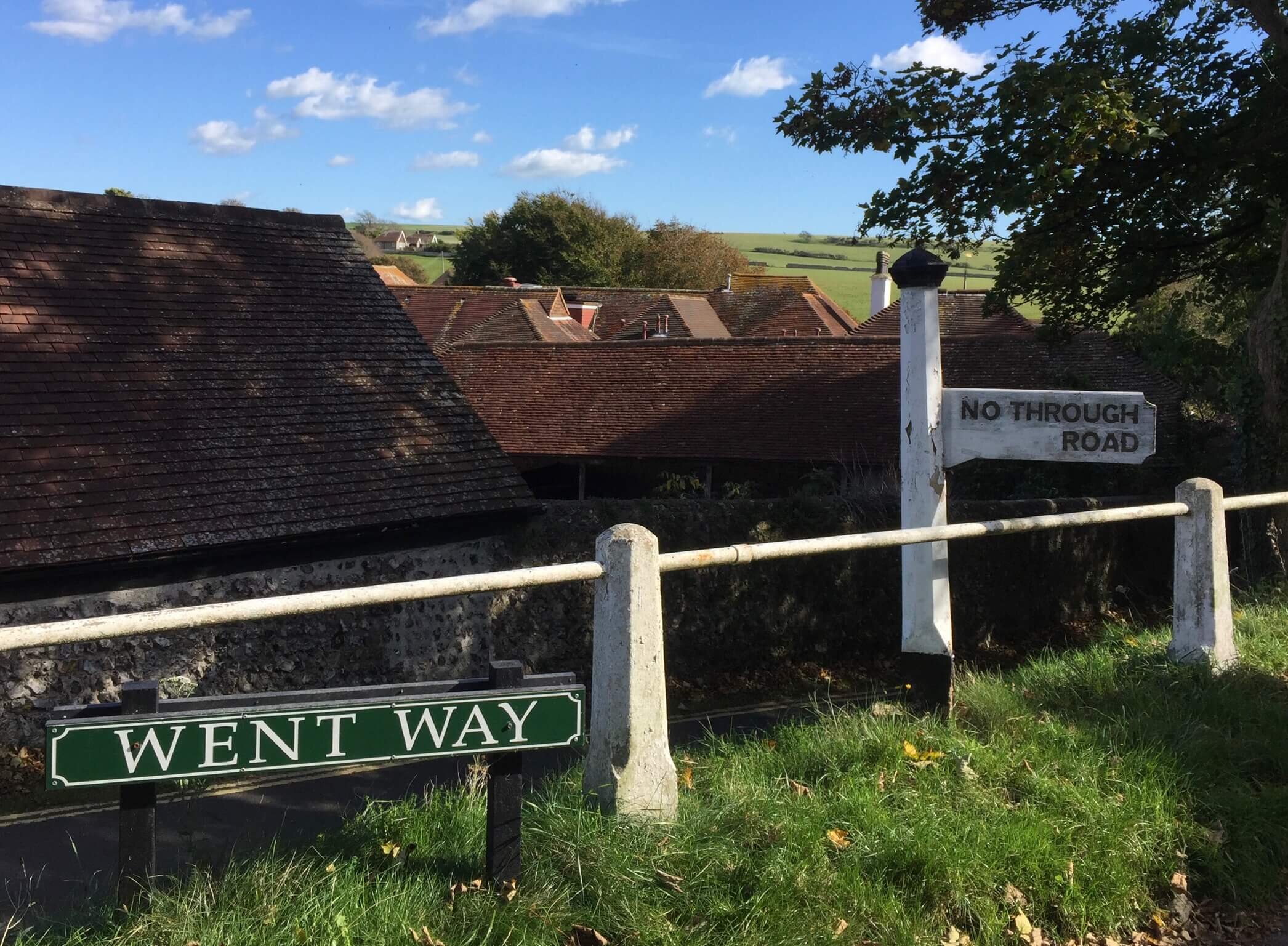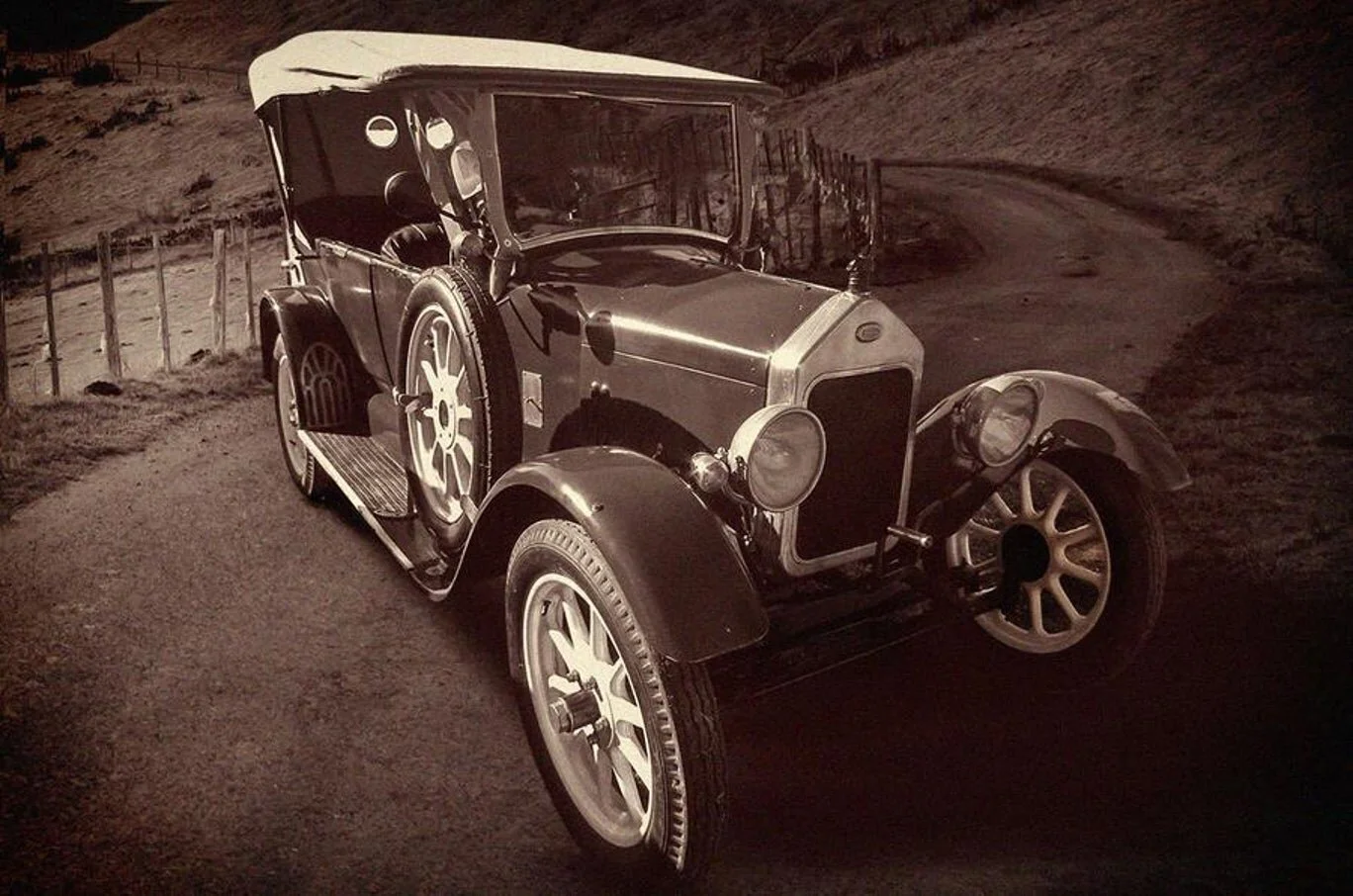Holmes In England: East Dean, Sussex
There are two East Deans to be found in the U.K., both in the South Downs. One lies in West Sussex, near Chichester, the other 50 miles away in East Sussex, a mile from the chalk cliffs of the Seven Sisters and 5 miles from Eastbourne—and it is this East Dean that features in One Must Tell the Bees.
“The Wolseley, with its big, powerful engine, climbed the hills with ease, and after not even a quarter-hour we had attained the summit where the old Friston windmill announced the long descent of the southern headlands to the English Channel. At the junction with the coast road, my Good Samaritan steered the car left towards Eastbourne. As we rumbled downhill past the old telegraph house, I motioned him to take the next right, onto Upper Street, for East Dean.
This he did, and we soon passed the stone cottages that marked the edge of the village green, where a small wooden barracks now appeared, newly built since my last visit, its presence explained by an anti-Zeppelin gun that stood rather incongruously in the center of the green beneath a camouflage netting.
Happily, the familiar whitewashed walls of the Tiger Inn stood as ever on the northeast corner of the green, and from behind the old tithe barn on the corner opposite the Tiger rose the lofty bell tower of the East Dean parish church. The driver steered the Wolseley around the green and made for the red lamp box where, at last, we arrived at Went Hill Way…
— One Must Tell the Bees
The village is a 20-30 minute cab ride from the Eastbourne railway station, and though small—not much more than a village green—it is a haven for walkers and cyclists, being just off the South Downs Way.
Don’t expect much in the way of shopping—the focus is very much on the outdoors—but a delightful lunch can be had at the cozy Beehive on the Green and welcome accommodations at the Tiger Inn, along with an excellent breakfast, lunch and dinner.
And if you walk south across the green from the Tiger you’ll come to Went Way. It is not a through-street, but as it curls across Went Hill it commands a distant view of the old Belle Tout Lighthouse that sits just on the edge of the chalk cliffs overlooking the English Channel.
And if you disturb the hedges along Went Way, you may just run into an old companion…
I pressed my case now in a more friendly tone of voice. “If Mr. Holmes tells me to leave, good madam, I will be on my way. All I ask is to see my friend.”
“I’m sorry,” she began, “but you must not stay here—”
Suddenly the dog cocked its ears, wiggled loose and jumped to the ground, barking as it dashed through the same unseen break in the hedge from which the woman had emerged, and soon a voice sang out from the hidden side of the yew—a familiar voice, somewhat huskier than last I heard it, but well-remembered all the same.
“Toby! Toby the Second!”
The dog’s barking ceased, and now there was a rustling in the hedge followed by the appearance of a hand parting the hedgerow with an odd, flat trowel dripping with honey. The hand and trowel were soon followed by their owner, a tall, thin figure dressed in a well-used lab coat similar to that worn by the woman. As the dog joyfully circled his heels, he set down the tool and extended his hand.
“My dear Watson,” said Mr. Sherlock Holmes, with a smile and, dare I say, a glistening in his eyes. “Forgive the rather unwelcoming nature of your reception. It is so good of you to come.”
“Holmes!” I cried, taking his outstretched hand in mine. “Holmes!”
— One Must Tell the Bees
East Dean Vicarage postcard / public domain, Eastbourne Railway Station photo disused-stations.org.uk, Wolseley photo standard.co.uk, all other photography by the author.)










